
Jaipur: The Pink City of India
Discover Jaipur, the Pink City of India, where historic forts, palaces, vibrant bazaars, and delectable cuisine create an unforgettable travel experience.
Jaipur, the capital city of Rajasthan, is a vibrant destination that seamlessly blends history with modernity. Known as the Pink City due to its distinctive terracotta-colored buildings, Jaipur offers a rich tapestry of culture, architecture, and cuisine. Visitors are greeted with a warm welcome and a myriad of experiences, from exploring grand palaces to shopping in bustling markets. The city's crown jewel is the Amber Fort, a magnificent hilltop fort that offers stunning views and a glimpse into Rajasthan's royal past. The City Palace, a sprawling complex of courtyards, gardens, and buildings, provides another window into the opulent lifestyle of Jaipur's former rulers. Nearby, the Hawa Mahal, or Palace of Winds, stands as an architectural marvel with its intricate latticework and countless windows. Jaipur is also a haven for shoppers. The vibrant bazaars of Johari Bazaar and Bapu Bazaar are filled with colorful textiles, precious gemstones, and traditional handicrafts. Food enthusiasts will relish the chance to sample Rajasthani cuisine, which ranges from spicy curries to sweet treats like ghewar and mawa kachori. Beyond its monuments and markets, Jaipur offers numerous festivals and cultural events throughout the year. The annual Jaipur Literature Festival attracts writers and thinkers from around the world, while the Teej and Gangaur festivals showcase local traditions and celebrations. With its blend of heritage, culture, and hospitality, Jaipur promises an unforgettable experience for every traveler.
Local tips in Jaipur
- Visit the Amber Fort early in the morning to avoid the crowds and heat.
- Hire a local guide to get deeper insights into the history and architecture of the City Palace and other landmarks.
- Explore the colorful bazaars for unique souvenirs, but be prepared to haggle for the best prices.
- Try local Rajasthani dishes like dal baati churma, laal maas, and kachori at traditional eateries.
- Attend the evening light and sound show at Amber Fort for a captivating retelling of the fort's history.
- Plan your visit around the Jaipur Literature Festival or local festivals for a richer cultural experience.
- Wear comfortable shoes and carry water as you will be doing a lot of walking while exploring the city's attractions.
Neighbourhoods in Jaipur
Jaipur: The Pink City of India
Jaipur, the capital city of Rajasthan, is a vibrant destination that seamlessly blends history with modernity. Known as the Pink City due to its distinctive terracotta-colored buildings, Jaipur offers a rich tapestry of culture, architecture, and cuisine. Visitors are greeted with a warm welcome and a myriad of experiences, from exploring grand palaces to shopping in bustling markets. The city's crown jewel is the Amber Fort, a magnificent hilltop fort that offers stunning views and a glimpse into Rajasthan's royal past. The City Palace, a sprawling complex of courtyards, gardens, and buildings, provides another window into the opulent lifestyle of Jaipur's former rulers. Nearby, the Hawa Mahal, or Palace of Winds, stands as an architectural marvel with its intricate latticework and countless windows. Jaipur is also a haven for shoppers. The vibrant bazaars of Johari Bazaar and Bapu Bazaar are filled with colorful textiles, precious gemstones, and traditional handicrafts. Food enthusiasts will relish the chance to sample Rajasthani cuisine, which ranges from spicy curries to sweet treats like ghewar and mawa kachori. Beyond its monuments and markets, Jaipur offers numerous festivals and cultural events throughout the year. The annual Jaipur Literature Festival attracts writers and thinkers from around the world, while the Teej and Gangaur festivals showcase local traditions and celebrations. With its blend of heritage, culture, and hospitality, Jaipur promises an unforgettable experience for every traveler.
When is the best time to go to Jaipur?
Iconic landmarks you can’t miss
Amber Palace
Discover the enchanting Amber Palace in Jaipur, a stunning fusion of Rajput architecture and royal history, set against picturesque hills and serene landscapes.

Hawa Mahal
Discover the enchanting Hawa Mahal in Jaipur, a stunning architectural masterpiece with a rich history and breathtaking views.

Nahargarh Fort
Explore Nahargarh Fort, a stunning historical fortress in Jaipur offering breathtaking views, rich architecture, and a glimpse into Rajasthan's royal heritage.
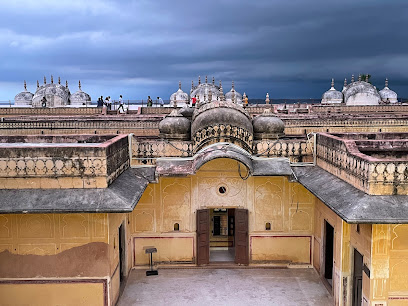
The City Palace
Explore the enchanting City Palace in Jaipur, a historical marvel showcasing the rich heritage and exquisite architecture of Rajasthan.

Jantar Mantar - Jaipur
Explore the Jantar Mantar in Jaipur, a UNESCO World Heritage Site showcasing ancient astronomical instruments and the brilliance of Indian science.

Jal Mahal
Explore Jal Mahal, the historic water palace of Jaipur, a stunning fusion of nature and architecture in Rajasthan's royal landscape.

Jaigarh Fort
Explore the majestic Jaigarh Fort, a historical marvel in Jaipur, Rajasthan, showcasing royal architecture and panoramic views of the Aravalli hills.
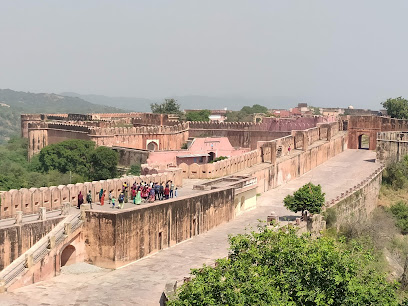
Amar Jawan Jyoti
Explore Amar Jawan Jyoti, a serene memorial park in Jaipur dedicated to India's brave soldiers, offering reflection and historical insights.

Tripolia Gate
Discover the grandeur of Tripolia Gate, a historical landmark in Jaipur reflecting the rich heritage and vibrant culture of Rajasthan.

Sheesh Mahal Amber Fort
Explore the Sheesh Mahal at Amber Fort, a historical gem in Jaipur, showcasing stunning mirror work and regal architecture amidst breathtaking landscapes.

Sisodia Rani ka Bagh
Explore the historical beauty and serene landscapes of Sisodia Rani ka Bagh, a royal garden in Jaipur that showcases Rajasthan's rich culture and architecture.
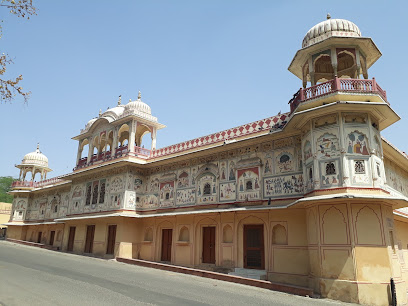
Kanak Vrindavan Park
Discover the serene beauty of Kanak Vrindavan Park, a lush garden oasis in Jaipur blending nature, culture, and stunning views of Amer Fort.

Shaheed Smarak(Trimurti Circle)
Explore the rich history of Jaipur at Shaheed Smarak, a monumental tribute to India's heroes amidst the city's vibrant culture.

Sawai Jai Singh Ji Statue
Explore the grandeur of Sawai Jai Singh Ji Statue, a historical landmark in Jaipur, reflecting Rajasthan's rich culture and heritage.

Vidyadhar Bagh
Experience the tranquil beauty of Vidyadhar Bagh, a historic garden oasis in Jaipur, where nature and architecture unite in perfect harmony.

Unmissable attractions to see
Amber Palace
Explore the enchanting Amber Palace in Jaipur, a historical marvel showcasing the grandeur of Rajput architecture and rich royal history.
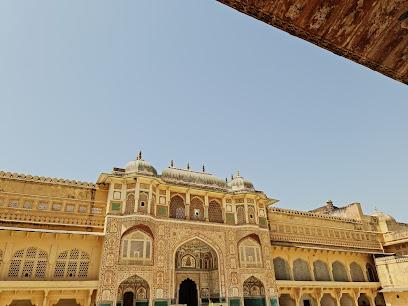
Hawa Mahal
Explore the architectural marvel of Hawa Mahal, Jaipur's iconic Palace of Winds, showcasing exquisite craftsmanship and rich royal history.

Nahargarh Fort
Explore the majestic Nahargarh Fort in Jaipur, where history meets breathtaking views of the Pink City and the Aravalli hills.

Albert Hall Museum
Explore the Albert Hall Museum in Jaipur, where history, art, and culture converge in a breathtaking architectural setting.

Raj Mandir Cinema Jaipur
Discover the iconic Raj Mandir Cinema in Jaipur, a cultural landmark blending tradition and modern entertainment with a unique cinematic experience.

Moti Dungri Ganesh Ji Temple
Discover the spiritual charm of Moti Dungri Ganesh Ji Temple, a must-visit Hindu shrine in the heart of Jaipur, Rajasthan.

Jantar Mantar - Jaipur
Explore the celestial wonders of Jantar Mantar, Jaipur's UNESCO World Heritage Site and a testament to India's rich astronomical heritage.

Jal Mahal
Explore the enchanting Jal Mahal in Jaipur, a stunning water palace that beautifully merges history, architecture, and natural beauty amidst serene landscapes.

Birla Mandir, Jaipur
Explore the architectural beauty and spiritual tranquility of Birla Mandir, a must-visit Hindu temple in Jaipur, Rajasthan.

Jaigarh Fort
Explore Jaigarh Fort, a historic fortress in Jaipur, Rajasthan, offering breathtaking views and insights into the royal heritage of India.

Central Park
Discover the lush landscapes and vibrant ambiance of Central Park, a serene oasis in the heart of Jaipur, perfect for relaxation and exploration.

Central Park
Explore the lush landscapes and tranquil lakes of Central Park in Jaipur, a serene escape in the vibrant heart of Rajasthan.

Shree Khole Ke Hanuman Ji Temple_jaipur
Experience the spiritual charm and architectural beauty of Shree Khole Ke Hanuman Ji Temple, a serene retreat in the heart of Jaipur.

THIKANA MANDIR SRI GOVINDDEVJI , JAIPUR
Explore the spiritual essence of Jaipur at Thikana Mandir Sri Govinddevji, a beautiful Hindu temple rich in culture and tradition.

Shree Akshardham Temple_jaipur
Discover the stunning architecture and serene atmosphere of Shree Akshardham Temple, a must-visit spiritual haven in Jaipur, India.

Essential places to dine
Handi restaurant jaipur
Experience the rich flavors of North Indian cuisine at Handi Restaurant in Jaipur - where tradition meets taste.

Fort Restaurant Jaipur
Discover exquisite Indian cuisine in an elegant setting at Fort Restaurant Jaipur - a must-visit culinary destination in Rajasthan.

Govindam Retreat
Discover authentic Rajasthani vegetarian cuisine at Govindam Retreat in Jaipur - a family-friendly restaurant with delightful breakfast options.

Skyfall Restaurant
Experience luxurious Italian dining at Skyfall Restaurant in Jaipur with stunning views and an exquisite culinary journey.

Suvarna Mahal
Indulge in authentic North Indian cuisine at Suvarna Mahal within Rambagh Palace – where every meal tells a royal story.

SKY BEACH
Experience the vibrant flavors and stunning views at Sky Beach – Jaipur's premier rooftop restaurant offering global cuisines and live music.

Kalyan Restaurant & Bar
Experience the best of Indian and international cuisine at Kalyan Restaurant & Bar in Jaipur - where every meal is a celebration.
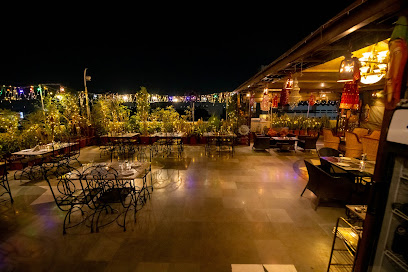
Peacock Restaurant
Experience authentic North Indian cuisine at Peacock Restaurant in Jaipur - perfect for breakfast or any meal!

Spice Court
Experience authentic Indian flavors at Spice Court - where tradition meets culinary excellence in Jaipur.
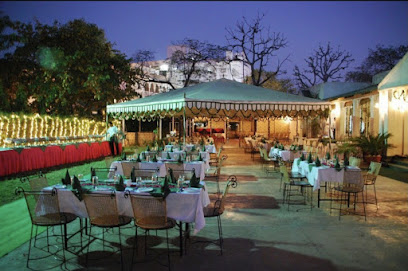
Niros Restaurant
Experience authentic Indian cuisine at Niros Restaurant in Jaipur - where every dish tells a story.

Meraaki Kitchen
Experience exquisite Indian vegetarian cuisine at Meraaki Kitchen in Jaipur - where tradition meets modernity.

Bar Palladio Jaipur
Experience exquisite Italian dining at Bar Palladio Jaipur - where authentic flavors meet stunning ambiance in Rajasthan's royal city.

Pakwaan Candlelight Dinner Restaurant
Experience the magic of Indian flavors at Pakwaan Candlelight Dinner Restaurant in Jaipur - perfect for romantic evenings and family gatherings.

THE ROBOT RESTAURANT JAIPUR - YELLOW HOUSE
Discover the extraordinary dining experience at The Robot Restaurant Jaipur where culinary delights meet robotic service.

Doorbeen Restaurant
Experience the taste of Italy in Jaipur at Doorbeen Restaurant, where every dish is crafted with passion and served with breathtaking views.

Markets, malls and hidden boutiques
World Trade Park
Discover the dynamic World Trade Park, Jaipur's premier shopping mall blending luxury shopping, entertainment, and unique culinary experiences.

Gaurav Tower
Explore Gaurav Tower, Jaipur's bustling shopping mall, where local charm meets global brands in a vibrant atmosphere.

Lifestyle Stores
Shop the latest trends and local treasures at Lifestyle Stores in Jaipur, a vibrant hub for fashion and unique gifts.
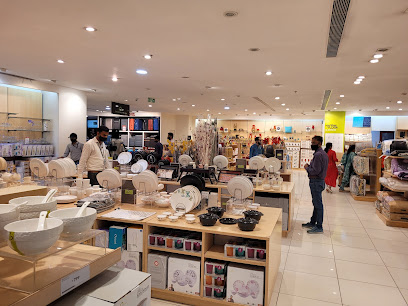
Gulabchand Prints
Explore the vibrant world of traditional and contemporary fashion at Gulabchand Prints in Jaipur, a must-visit clothing store for every traveler.
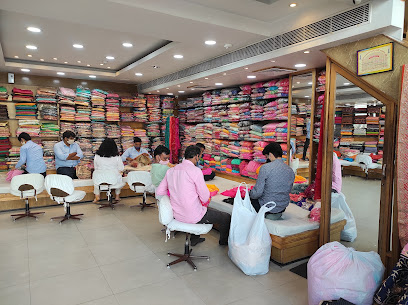
Pratap Sons
Discover the vibrant styles of women's clothing at Pratap Sons in Jaipur, where local fashion meets contemporary trends.

Vasansi Jaipur
Discover the elegance of Rajasthan's fashion at Vasansi Jaipur, where traditional craftsmanship meets modern design.
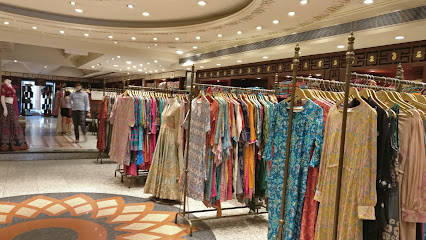
Devils 'n' Angels | Best Birthday Party Wear Dresses | Birthday Frock | Jaipur Rajasthan
Explore Devils 'n' Angels in Jaipur for a unique shopping experience featuring stylish birthday party wear dresses and trendy children's apparel.

Sunrise Gift Shop
Explore unique gifts and local prints at Sunrise Gift Shop, where Rajasthani craftsmanship meets vibrant creativity in Jaipur.

Kittu Gift And Toys
Discover unique gifts and toys at Kittu Gift And Toys, a must-visit shop in Jaipur for delightful souvenirs and local craftsmanship

KHEL KHILONA
Discover the magic of toys and gifts at KHEL KHILONA, Jaipur's premier destination for unique souvenirs and delightful childhood treasures.

Unique Fancy Sarees Chitrakoot Jaipur
Explore the exquisite collection of traditional sarees at Unique Fancy Sarees in Jaipur - a treasure for fashion enthusiasts and cultural explorers alike.

Anokhi
Explore the exquisite craftsmanship of Anokhi, a boutique in Jaipur offering unique handmade textiles and artisanal treasures that capture the spirit of Rajasthan.

Unique Fancy Sarees
Discover the beauty of traditional and contemporary sarees at Unique Fancy Sarees in Jaipur, a must-visit for fashion enthusiasts.

Fair Deal Textile
Discover the vibrant world of textiles and fashion at Fair Deal Textile, where tradition meets modern style in the heart of Jaipur.

Soma Shop
Explore Soma Shop in Jaipur for a unique selection of clothing and home goods that blend traditional craftsmanship with contemporary styles.

Essential bars & hidden hideouts
Blackout club in Jaipur
Discover the vibrant nightlife at Blackout Club in Jaipur, a premier lounge for exquisite cocktails and unforgettable experiences.

Asteria
Experience luxury at Asteria, Jaipur's premier lounge offering exquisite dining, fine wines, and an unforgettable nightlife ambiance.

The Forresta Kitchen & Bar
Discover culinary excellence at The Forresta Kitchen & Bar, Jaipur's premier brewpub offering a delightful mix of local flavors and vibrant atmosphere.

The Night Jar Reloaded
Discover The Night Jar Reloaded in Jaipur - a stylish lounge and restaurant offering a unique dining experience with a vibrant atmosphere and exquisite menu.
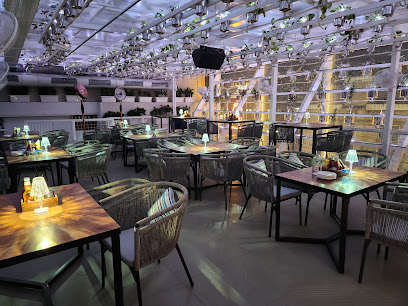
Pentagon Bar & Kitchen
Experience the best of Jaipur's nightlife at Pentagon Bar & Kitchen, where craft brews meet delicious dining in a lively atmosphere.

WTF Sports Cafe & Bar
Experience the ultimate sports viewing and dining experience at WTF Sports Cafe & Bar in Jaipur, where every match is a celebration.

Townsend - Bar & Kitchen
Savor the exquisite flavors of grilled cuisine at Townsend - Bar & Kitchen, a premier dining destination in Jaipur, Rajasthan.
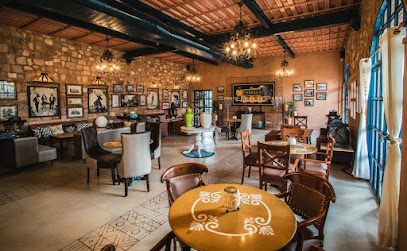
Bar Palladio Jaipur
Experience the perfect blend of Italian cuisine and Rajasthani elegance at Bar Palladio Jaipur, an exquisite dining destination in the Pink City.
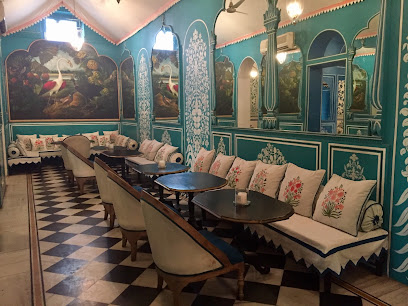
SKYZA Rooftop Lounge
Discover Jaipur's vibrant dining scene at SKYZA Rooftop Lounge, where exquisite cuisine meets stunning city views.

Scorpion A Pub City
Discover the vibrant nightlife at Scorpion A Pub City in Jaipur, where great drinks, stunning views, and a lively atmosphere await you.

360° - Best cocktail bar & lounge| Panoramic Rooftop
Discover Jaipur's vibrant nightlife at 360°, a rooftop cocktail bar offering stunning views, live music, and an exquisite beverage selection.
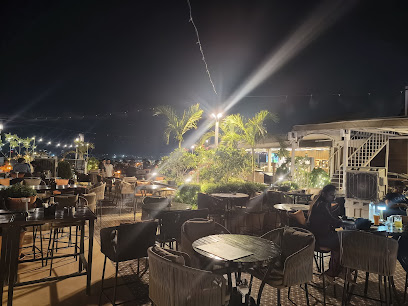
#BC - Bottles and Chimney
Discover the vibrant atmosphere and eclectic flavors at BC - Bottles and Chimney, where tradition meets modern nightlife in Jaipur.

The CapeTown, Jaipur
Discover the vibrant nightlife at The CapeTown, Jaipur, where delicious cuisine meets lively entertainment in a sophisticated bar atmosphere.

UP&UP - THE MUSICAL TERRACE
Discover UP&UP - The Musical Terrace in Jaipur: a vibrant lounge with breathtaking views, exquisite cuisine, and lively entertainment for an unforgettable experience.

F Bar And Lounge
Discover the elegance of F Bar And Lounge in Jaipur, where exquisite drinks and gourmet dining meet stunning city views.

Travel experiences inspired by this city
Explore more travel diariesLocal Phrases
-
- Helloनमस्ते
[Namaste] - Goodbyeअलविदा
[Alvida] - Yesहां
[Haan] - Noनहीं
[Nahi] - Please/You're welcomeकृपया/स्वागत है
[Kripya/Swagat hai] - Thank youधन्यवाद
[Dhanyavaad] - Excuse me/Sorryमाफ़ कीजिए/क्षमा करें
[Maaf kijiye/Kshama karen] - How are you?आप कैसे हैं?
[Aap kaise hain?] - Fine. And you?ठीक हूँ। आप?
[Theek hoon. Aap?] - Do you speak English?क्या आप अंग्रेज़ी बोलते हैं?
[Kya aap angrezi bolte hain?] - I don't understandमुझे समझ नहीं आया
[Mujhe samajh nahi aaya]
- Helloनमस्ते
-
- I'd like to see the menu, pleaseकृपया मेन्यू दिखाइए
[Kripya menu dikhaiye] - I don't eat meatमैं मांस नहीं खाता
[Main maans nahi khaata] - Cheers!चियर्स!
[Cheers!] - I would like to pay, pleaseकृपया मुझे भुगतान करने दीजिए
[Kripya mujhe bhugtan karne dijiye]
- I'd like to see the menu, pleaseकृपया मेन्यू दिखाइए
-
- Help!बचाओ!
[Bachao!] - Go away!चले जाओ!
[Chale jao!] - Call the Police!पुलिस को बुलाओ!
[Police ko bulaao!] - Call a doctor!डॉक्टर को बुलाओ!
[Doctor ko bulaao!] - I'm lostमैं खो गया/गई हूं
[Main kho gaya/gayi hoon] - I'm illमुझे बीमारी है
[Mujhe bimari hai]
- Help!बचाओ!
-
- I'd like to buy...मैं ... खरीदना चाहूंगा/चाहूंगी
[Main ... khareedna chaahunga/chaahoongi] - I'm just lookingमैं बस देख रहा/रही हूं
[Main bas dekh raha/rahi hoon] - How much is it?यह कितना है?
[Yeh kitna hai?] - That's too expensiveयह बहुत महंगा है
[Yeh bahut mehnga hai] - Can you lower the price?क्या आप कीमत कम कर सकते हैं?
[Kya aap keemat kam kar sakte hain?]
- I'd like to buy...मैं ... खरीदना चाहूंगा/चाहूंगी
-
- What time is it?अब कितने बजे हैं?
[Ab kitne baje hain?] - It's one o'clockएक बजे हैं
[Ek baje hain] - Half past (10)(10) के बाद सड़े पांच
[(10) ke baad sadhe paanch] - Morningसुबह
[Subah] - Afternoonदोपहर
[Dopahar] - Eveningशाम
[Shaam] - Yesterdayकल
[Kal] - Todayआज
[Aaj] - Tomorrowकल
[Kal] - 1एक
[Ek] - 2दो
[Do] - 3तीन
[Teen] - 4चार
[Chaar] - 5पाँच
[Paanch] - 6छह
[Chhah] - 7सात
[Saath] - 8आठ
[Aath] - 9नौ
[Nau] - 10दस
[Das]
- What time is it?अब कितने बजे हैं?
-
- Where's a/the...?... कहाँ है?
[... kahaan hai?] - What's the address?पता क्या है?
[Pata kya hai?] - Can you show me (on the map)?क्या आप मुझे दिखा सकते हैं (नक्शे पर)?
[Kya aap mujhe dikha sakte hain (naksha par)?] - When's the next (bus)?अगली (बस) कब है?
[Agli (bus) kab hai?] - A ticket (to ....)एक टिकट (... के लिए)
[Ek ticket (... ke liye)]
- Where's a/the...?... कहाँ है?
History of Jaipur
-
Jaipur, also known as the Pink City, was founded in 1727 by Maharaja Sawai Jai Singh II. The city was meticulously planned, following the principles laid out in ancient Indian Vastu Shastra. It was one of the earliest planned cities of modern India, divided into six sectors separated by broad streets, with designated areas for businesses, residences, and religious and cultural activities.
-
The City Palace, located in the heart of Jaipur, was built between 1729 and 1732 by Maharaja Sawai Jai Singh II. The complex is a blend of Mughal and Rajput architecture and includes various palaces, courtyards, and gardens. The Chandra Mahal and Mubarak Mahal are the most notable buildings within the complex, with the former still serving as the residence of the royal family.
-
Jantar Mantar is an astronomical observatory built by Maharaja Sawai Jai Singh II in 1734. It comprises nineteen architectural astronomical instruments and is one of the largest observatories ever built. Jantar Mantar is a UNESCO World Heritage site and showcases the scientific prowess and interest in astronomy that prevailed in Jaipur during that era.
-
The Hawa Mahal, or the 'Palace of Winds,' was constructed in 1799 by Maharaja Sawai Pratap Singh. This five-story structure with its 953 small windows, called jharokhas, was designed to allow royal ladies to observe street festivals and daily life without being seen. Its distinctive façade resembles the crown of Lord Krishna, reflecting the Maharaja’s devotion to the deity.
-
During the 18th and 19th centuries, Jaipur emerged as a significant commercial hub. The city's strategic location made it a center for trade, especially in gems, jewelry, and textiles. The famous Johari Bazaar and Tripolia Bazaar are testaments to Jaipur's thriving commerce and craftsmanship, with artisans and traders contributing to the city's prosperity.
-
During the British Raj, Jaipur maintained a semi-autonomous status as a princely state. The city underwent modernization efforts, including the establishment of schools, hospitals, and infrastructure improvements. Maharaja Sawai Man Singh II played a pivotal role in these developments, ensuring that Jaipur adapted to the changing political landscape while preserving its cultural heritage.
-
After India gained independence in 1947, Jaipur became the capital of the newly formed state of Rajasthan. The city continued to grow and develop, balancing modernity with tradition. Efforts were made to preserve its historical monuments and cultural heritage, leading to Jaipur becoming a prominent tourist destination and cultural center in India.
-
In 2019, Jaipur was designated as a UNESCO World Heritage Site, recognizing its exceptional architectural and cultural significance. The city's planning and design, influenced by Vastu Shastra and featuring iconic structures like the City Palace, Jantar Mantar, and Hawa Mahal, highlight its historical importance and enduring legacy.
Jaipur Essentials
-
Jaipur, the capital city of Rajasthan, is well-connected by air, rail, and road. The Jaipur International Airport (JAI) is located about 13 kilometers from the city center and offers both domestic and international flights. Major airlines operate regular flights to and from cities like Delhi, Mumbai, and Bangalore, as well as international destinations such as Dubai and Bangkok. Jaipur Junction, the main railway station, is a major hub in the Indian Railways network with trains connecting to cities across India. For road travel, Jaipur is accessible via National Highway 48 (NH48) which connects Delhi and Mumbai, and there are frequent bus services operated by the Rajasthan State Road Transport Corporation (RSRTC) and private operators.
-
Getting around Jaipur is convenient with several transportation options available. Auto-rickshaws and cycle-rickshaws are popular for short distances, while taxis and app-based cab services like Uber and Ola provide comfortable travel within the city. Jaipur also has a well-developed public bus network operated by Jaipur City Transport Services Limited (JCTSL). For a unique experience, you can hire a traditional horse-drawn carriage known as a 'tonga' for short distances. Renting a scooter or bicycle is also an option for those who prefer exploring at their own pace.
-
The official currency in India is the Indian Rupee (INR). Credit and debit cards are widely accepted in hotels, restaurants, and shops, but it is advisable to carry cash for transactions in smaller establishments and local markets. ATMs are readily available throughout Jaipur, but it is wise to withdraw some cash upon arrival to cover initial expenses. Currency exchange services are available at the airport, banks, and authorized exchange centers in the city.
-
Jaipur is generally considered a safe city for tourists, but it is important to take standard precautions. Avoid isolated areas after dark and be cautious of your belongings in crowded places. Some areas like the walled city (Pink City) and popular tourist spots can be targets for pickpocketing and scams, so stay vigilant. It is advisable to use reputable transportation services and avoid unlicensed taxis. Always keep a photocopy of your passport and important documents separate from the originals.
-
In case of emergencies, dial 100 for police assistance, 101 for fire services, and 102 for medical emergencies. Jaipur has several hospitals and clinics that offer medical care, including SMS Hospital, Fortis Escorts Hospital, and Apollo Spectra Hospitals. Pharmacies are widespread and stock both prescription and over-the-counter medications. It is recommended to have travel insurance that covers medical emergencies and to keep a list of emergency contacts handy.
-
Fashion: Do dress modestly, especially when visiting religious sites. Avoid wearing revealing clothing. Religion: Do respect local customs and traditions. Remove your shoes before entering temples and cover your head if required. Public Transport: Do be respectful and give up your seat to elderly passengers. Don't eat or drink on public transport. Greetings: Do greet people with a 'Namaste' and a slight bow of the head. A handshake is also acceptable in professional settings. Eating & Drinking: Do try local delicacies and accept food offerings graciously. Don't refuse hospitality, as it is considered impolite.
-
To experience Jaipur like a local, visit the bustling bazaars such as Johari Bazaar and Bapu Bazaar where you can shop for traditional Rajasthani textiles, jewelry, and handicrafts. Engage with locals and participate in cultural activities such as folk dance performances and puppet shows. Don't miss visiting the iconic landmarks like the Hawa Mahal, City Palace, and Amber Fort. For an authentic culinary experience, try the street food and dine at local eateries serving traditional Rajasthani thali.
Nearby Cities to Jaipur
-
Things To Do in Ranthambore
-
Things To Do in Pushkar
-
Things To Do in Agra
-
Things To Do in Delhi
-
Things To Do in Gwalior
-
Things To Do in Jodhpur
-
Things To Do in Udaipur
-
Things To Do in Rishikesh
-
Things To Do in Bhopal
-
Things To Do in Kanpur
-
Things To Do in Jaisalmer
-
Things To Do in Shimla
-
Things To Do in Lucknow
-
Things To Do in Lahore
-
Things To Do in Amritsar





















